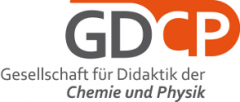Emergent Aspects of Radioactivity: Creation of a Survey on Half-life
Hull, Michael
Beitrag auf der GDCP-Jahrestagung 2019
It has been argued (Eijkelhof 1990) that the randomness inherent in radioactivity contributes to student difficulty in understanding the topic. Students tend to attribute predictable characteristics (which emerge when there are enough random events taking place) to the individual events themselves. Consistent with previous findings by other researchers, a pilot study consisting of seven interviews of Gymnasium students in Vienna last year indicated a student tendency to apply the half-life concept to a single nucleus, for example, to say that the nucleus must transform prior to the half-life or that the nucleus is half-gone after the half-life. Based upon prompts used in these interviews, I created and administered an open-ended survey to Gymnasium students in 2019. In this poster, I will discuss 1) the results of this survey, and 2) how I used these results in creating a fixed-response version of the survey that I plan to administer in the future.
Referenz:
Hull, Michael (2020). Emergent Aspects of Radioactivity: Creation of a Survey on Half-life. In: S. Habig (Hrsg.), Naturwissenschaftliche Kompetenzen in der Gesellschaft von morgen. Gesellschaft für Didaktik der Chemie und Physik, Jahrestagung in Wien 2019. (S. 590). Universität Duisburg-Essen
Den Beitrag können Sie hier als pdf herunterladen.
Der gesamte Tagungsband, in dem dieser Beitrag erschienen ist, ist ebenfalls verfügbar: Tagungsband herunterladen
